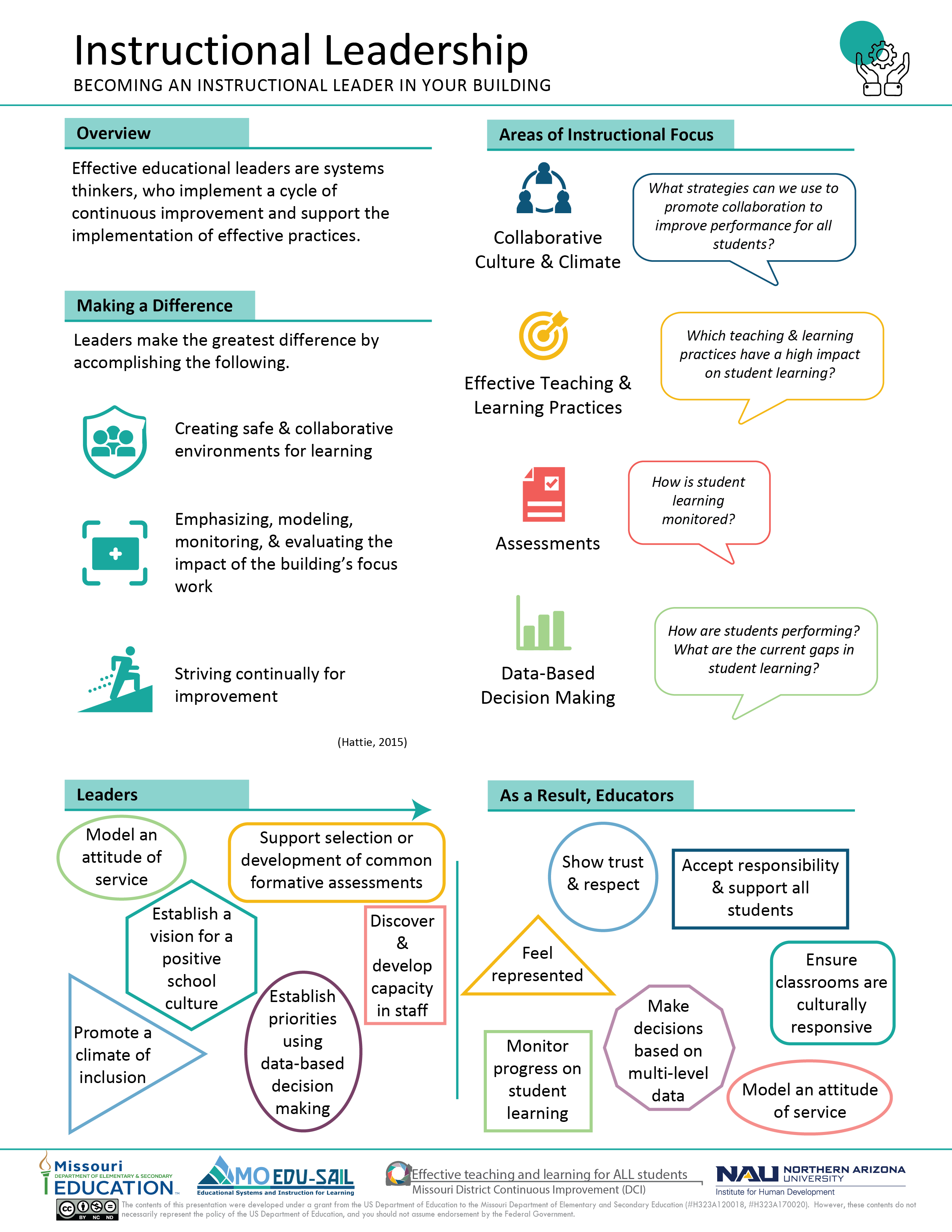Becoming the Instructional Leader of Your Building: A Critical Action Guide
Leaders who have a high impact on student outcomes understand the need to focus on learning and the impact of learning and believe their fundamental task is to evaluate the effect of everyone on student learning. Instructional leaders:
- Develop, support and maintain a collaborative culture and climate.
- Promote effective teaching and learning practices that align to leader standards.
- Provide for the development and use of common formative assessments.
- Use data to make decisions, determine learning priorities, and expend resources.
Course Outcomes
In this course, building leaders will learn how to take key actions in instructional areas of focus enabling them to become the instructional leaders of their buildings. Inside you will discover how to:
- Promote a culture that is safe for collaboration.
- Gain knowledge and understanding of research-based effective teaching/learning practices.
- Gain knowledge and understanding regarding the importance and use of common formative assessments to drive instruction.
- Determine the current reality of the building through the use of data.
Reflective Questions
This course is a “getting started” package to help develop instructional leadership skills. Its focus is on strategies to develop a staff that works across four areas that have been shown to have a positive impact on school performance and student outcomes. Those areas include:
Collaborative Culture and Climate
Effective Teaching and Learning Practices
Assessments
Data for Decision Making
In what ways do you think instructional leadership can impact these four areas?



